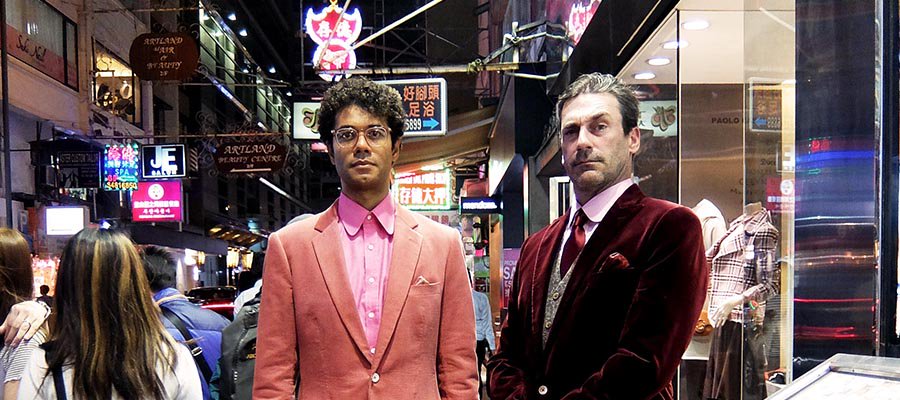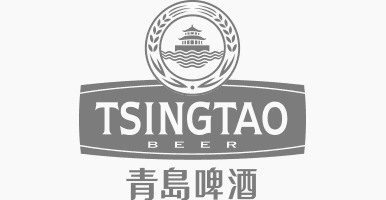Unsure where to travel this year? Comedian and actor Richard Ayoade has been jet-setting across Europe (and sometimes further afield) since 2015 with a celebrity friend in tow, bringing his delightful knack for witticism and sarcasm to each of the adventures on Travel Man: 48 Hours In…. The show has provided a plentiful source for travel inspiration, showcasing some of the more unusual and fascinating aspects of cultures around the world.
Traversing further than ever before, the show’s Christmas special saw Ayoade and Mad Men actor Jon Hamm wander across the ‘Pearl of the Orient’, Hong Kong. Embarking on a journey through the bustling streets to taste the local delicacies, visit many of the famous Buddha incarnations, and dabble in traditional Chinese practices such as Tai Chi, reflexology, and palm reading, Ayoade and Hamm provide only a brief snapshot of Hong Kong.

If you tuned into the show and were tempted by the wonders of the Asian archipelago, you can follow in the pair’s footsteps with our guide to some of the top attractions of Hong Kong.
TEMPLES
Hong Kong is well known for its vast number of temples, which are, arguably, one of the primary tourist attractions of the state. Ayoade and Hamm joined the some 10,000 visitors to flock towards the most popular temple, Sik Sik Yuen Wong Tai Sin Temple in Kowloon.
Sik Sik Yuen Wong Tai Sin Temple

Bringing together China’s three primary religions – Buddhism, Confucianism, and Taoism – and the promise to ‘make every wish come true upon request’, the Sik Sik Yuen Wong Tai Sin Temple unsurprisingly offers a haven for the masses. The ritual of kau cim (literally ‘request a stick’) is something to marvel at; temple visitors are invited to make a wish by shaking a bamboo cylinder of fortune sticks until one falls out, which is exchanged for a numbered piece of paper that the temple’s soothsayers will translate into the worshipper’s fortune.

As well as the ritual, the temple itself is incredibly impressive due to the winding pathways across the 18,000 square metres of land, the temple’s towering ornate arches, and the tranquil natural setting that provides a sanctuary amidst the surrounding skyscrapers.
Top tip: If you wander over to the Secondary Worshipping Platform, you’ll be met with gigantic bronze representations of the twelve Chinese zodiac signs. Each animal relates to a birth year in a twelve-year cycle, and symbolises its own set of personality traits. Finding and placing a hand on your own zodiac animal is cited to bring good luck.
Po Lin Monastery

Located on Lantau Island, Ayoade and Hamm also headed to the Po Lin Monastery (translated as ‘precious lotus’) to view the Tian Tan Buddha statue. If you’re feeling brave, take the Ngong Ping 360 Cable Car – Asia’s longest bi-cable ropeway – from Tung Chung on a 25-minute journey along some 5.7km to get to the island.

The cable cars offer stunning panoramic views across Hong Kong and the vast South China Sea. The monastery itself is hidden away among the lush green mountaintop some 268 steps up, with the famous ‘Big Buddha’ Tian Tan statue at its pinnacle, seated atop a lotus flower, gazing over the skyline. It took 12 years to complete the grand figure, which has become a spiritual landmark for Buddhists across Asia. The statue symbolises typical Buddhist values, emanating the harmony between man, nature and religion.

Top tip: The monastery is home to many devout monks; you may be able to witness the traditional ceremonies during your visit. If you’re feeling peckish, the monastery’s restaurant serves a delicious menu of vegetarian meals and snacks, including noodle soups, rice dumplings and dim sum.
Man Mo Temple
Man Mo Temple on Hollywood Road in Sheung Wan provides another unique glimpse into Chinese culture. The temple is the oldest in Hong Kong (having been built back in 1847), offering a sense of serenity and antiquity. The temple is named after two deities: Man, the god of literature, and Mo, the god of war. Hidden away right in the middle of the busy downtown area of Hong Kong, the temple provides a sanctuary from the outside world.

Top tip: Gaze up at the ceiling to behold the bell-shaped coils of incense sticks. These are burned by worshippers in the hopes of communicating with the gods.
Ten Thousand Buddhas Monastery
The Ten Thousand Buddhas Monastery in Sha Tin in the New Territories contains a plentiful collection of Buddha statues and carvings across its 8 hectares of land. The Buddhist temple was originally constructed in 1957 by the Buddhist monk, Yuet Kai, atop a steep hill; and now holds the monk’s dead body preserved in a glass case to be honoured by worshippers.

Top tip: Venture up the 430 steps and try to count the life-sized, golden-painted Buddha statues along the way – each is completely unique! Despite the temple’s name, there are said to be approximately 13,000 statues and Buddha icons in total.
CUISINE
A trip to another country wouldn’t be complete without sampling the local delicacies. Whilst you can expect all of the traditional Chinese staples, including dim sum, noodle dishes, and stews, Hong Kong has its own unique selection of dishes. Sometimes referred to as the ‘World’s Food Fair’, the state draws influences from both eastern and western cultures to concoct authentic cuisine fit for a gourmet palate.
There is no shortage of classic restaurants and food stalls across Hong Kong, but Mong Kok in the Yau Tsim Mong District – incidentally the most densely populated place on the planet – is a particularly praised hotspot. The eclectic mix of street vendors gives tourists the chance to sample both traditional dishes and the latest food trends.
Stinky Tofu

Considered to be the most notorious dish, stinky tofu isn’t for those with a delicate stomach. Classified as South East Asia’s own equivalent of Stilton cheese, the tofu acquires an especially acrid smell and taste due to a special fermentation process involving milk, fish, meat, and vegetables, which can last up to a couple of months.
Top tip: Eat the tofu with a hearty dollop of sweet sauce, chilli sauce or hoisin sauce.
Snake Soup
Containing as many as five different types of venomous snake meat, snake soup is revered for its supposed healing powers. The soup is usually eaten in the winter months to provide extra warmth and replenish the body.

Top tip: Enjoy snake soup at She Wong Lam in Sheung Wan or Sher Wong Fun in Central Hong Kong – both establishments are over a century old.
Offal

No part of an animal is wasted when it comes to offal dishes, which consist of a variety of internal organs and entrails from different animals. There are a number of different ways to enjoy offal, but most commonly you can eat these on a skewer with assorted sauces for seasoning, including barbecue, honey, mustard, and chilli.
Top tip: Roasted chicken liver with honey and crispy skin pork (siu yuk) are particularly popular offal dishes.
Yuenyeung

If you can’t decide between a cup of tea or coffee, Yuenyeung makes that decision easier for you. The popular beverage is a tea/coffee hybrid consisting of three parts black coffee, seven parts Hong Kong-style milk tea. Combining the bitterness of coffee and sweetness of tea results in a creamy drink with extra caffeine for good measure.
Top tip: Drink slowly to properly savour the taste.
SIGHTSEEING
The Peak

As the highest point on Hong Kong Island, The Peak yields some of the best views over the state and towards China’s skyline. The Peak Tram is the steepest funicular in the world, journeying up to Mount Austen, the island’s highest mountain. Once you’re at the top, you can head up to the Sky Terrace 428 viewing platform in The Peak Tower, which will reward you with panoramic views of the 8,000 or more skyscrapers that make up Hong Kong, as well as the luscious green foliage and warm blue seas of Victoria Harbour.

Top tip: Stay until nighttime to see the city truly come to life, and the lights reflect in and twinkle across the waters.
Temple Street Night Market
Waking up as soon as the sun goes down, Temple Street Night Market in central Kowloon is a bustling flea market filled with traders of all wares. It’s the perfect place to pick up a souvenir of your visit, grab a bowl of noodles or a sweet treat, and wander among classical Chinese antiques.

Top tip: Embrace a highly respected part of Chinese culture by having your palm read by a fortune teller.
Golden Bauhinia Square
In 1997, Hong Kong was no longer a part of the British colony but was returned to the People’s Republic of China. To mark this momentous point in history, Golden Bauhinia Square in Wan Chai holds the Forever Blooming Bauhinia Sculpture – a gift from the Chinese Central Government after the handover.

Top tip: On most days there is a flag-raising ceremony in the square to honour the historical occasion.
Clock Tower
By no means the tallest tower in Hong Kong, the Clock Tower stands at an impressive 44-metres tall, commemorating the old Kowloon-Canton Railway terminus. The landmark was erected in 1915 and is one of the few reminders of Hong Kong’s Age of Steam, an important moment in history as millions of Chinese immigrants passed through the area in hopes of a better life.

Top tip: The Clock Tower can be easily reached after wandering along the banks of Victoria Harbour.
Has this piqued your interest about Hong Kong? The state boasts a diverse culture, merging traditional buildings and religious temples, alongside towering skyscrapers and breathtaking scenery; offering a truly unique location for your travels. If you’ve been inspired to visit this amazing city and onwards to Mainland China, click here to view Cathay Pacific’s latest offers and start making those travel plans!
You can still catch the episode of Travel Man 48 hours in…. to see Richard Ayoade and Jon Hamm tour Hong Kong, taking in a tai chi drop-in session, experiencing tailoring at its best, flying in a chopper and eating some local delicacies. Click here to view.


